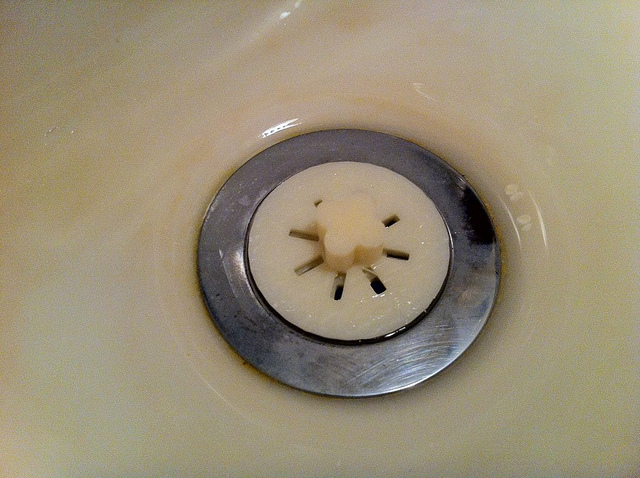 When we buy commercial cleaning supplies, we expect them to do only one thing: to clean! We use a wide array of products to keep our house sparkling, germ-free and sweet-smelling. But while the chemicals in cleaners bleach, foam and disinfect they also are poisonous if ingested, contribute to indoor air pollution and can be harmful if touched or inhaled. In fact, some detergents are amongst the most toxic products found in our home.
When we buy commercial cleaning supplies, we expect them to do only one thing: to clean! We use a wide array of products to keep our house sparkling, germ-free and sweet-smelling. But while the chemicals in cleaners bleach, foam and disinfect they also are poisonous if ingested, contribute to indoor air pollution and can be harmful if touched or inhaled. In fact, some detergents are amongst the most toxic products found in our home.
All-Purpose Cleaners
Some all-purpose cleaners contain the foaming agents triethanolamine (TEA) and diethanolamine (DEA), which react with nitrites (an often undisclosed contaminant or preservative) and form nitrosamine – a carcinogen that easily penetrate the skin. Our skin also readily absorbs the nerve-damaging 2-Butoxyethanol (also known as butyl cellosolve and ethylene glycol monobutyl ether), present in all-purpose cleaners. Vapors from ammonia-containing cleaners cause respiratory irritations. Sodium hypochlorite (bleach) and sodium hydroxide are highly caustic. Bleach should never be mixed with any other household product containing acids or ammonia – their reaction produces toxic gases. To prevent accidents, it’s best to simply avoid these chemicals.
The Alternatives:
Most of the household cleaning chores can be done safely (and inexpensively) with a sturdy scrubbing sponge and common ingredients like water, vinegar, lemon juice, liquid castile soap and baking soda and salt to scrub greasy spots.
Bathroom and Toilet Cleaners
The corrosive ingredients in toilet bowl cleaning products cause severe skin, eye and respiratory irritations. Some of these products contain sulfates, which can trigger asthma attacks in asthma sufferers. Most bathroom cleaners contain bleach, sodium hydroxide, or phosphoric acid which irritate and burn lungs, eyes, skin and, if ingested, the internal organs. If you mix acid-containing toilet cleaner with cleaner that contains chlorine, the result is lung-damaging chlorine gases. Again – the safest thing to do is to avoid these ingredients.
The Alternatives:
Soap, water and baking soda for scrubbing, work for most bathroom cleaning tasks. Scrubbing tiles using a thick brush with baking soda-water paste will remove mildew and stains. For sparkles toilet, mix 1/4 cup white vinegar or lemon juice and one cup of borax and pour into the bowl. Let sit for 1-2 hours and scrub with the toilet brush and flush.
Drain Cleaners
Commercial drain cleaning products are among the most dangerous of all household-cleaning supplies. Often they contain ingredients, which are corrosive such as bleach, sodium hydroxide that can permanently burn skin and eyes. They can be lethal if ingested.
The Alternatives:
Prevent drain-clogging in the first place by capturing hair and big particles with inexpensive plastic or metal drain screens. They are available at home improvement stores. Regularly pick up hair that collects around sink or shower drains, and try to avoid large food chunks to be washed down the kitchen sink. If clogs occur, use a snake plumbing tool or a plunger to remove the blockage manually.
Disinfectants and Antibacterials
Disinfectants are bacteria killing pesticides. Although they kill germs on the surfaces, where they have been applied, they cannot deal with the bacteria in the air, and they don’t provide long-lasting effect. Some disinfectants contain alkylphenol ethoxylates (APEs). APEs are hormone disruptors that don’t biodegrade easily, threatening sea life and wildlife when they go down the drains.
It’s sensible to eliminate some food-poisoning bacteria, such as E.coli and Salmonella, but our excessive fear of germs is leading to serious global changes. Coupled with misuse and overuse of antibiotics in medicine and in food, growing use of antibacterial cleaners, soaps and other germ-killing products is leading to development of antibiotic-resistant bacteria, according World Health Organization report from year 2000. As a result, medicine is loosing one of its most important tools for fighting inflammations and infectious diseases, as germs causing illnesses such as ear infections, meningitis, pneumonia, tuberculosis, and Staph infections is growing increasingly resistant to treatment via antibiotics.

The Alternatives:
Unless you have an illness that may make you especially vulnerable to infection or a compromised immune system, you most probably don’t have to use anti-bacterial and disinfecting products for most household chores.
Surfaces can be properly cleaned using hot water, castile soap and elbow grease. To be safe from food-borne infections wash products thoroughly before cooking and preparation, soak well leafy greens and rinse vegetables and fruits at least three times. Eat only fresh meat, fish and eggs and cook them thoroughly. Wash the cutting boards and tools, used when preparing of eggs and raw meats with hot water and soap. Refrigerate foods within two hours of cooking.
If you need to disinfect some surface just wipe it with a clean cloth dipped in denatured or methyl alcohol. Be cautious with these, because they also are poisonous if ingested, but luckily they evaporate quickly and the fumes are not a threat to your health.
Next week we will post part two of the list of most dangerous ingredients found in our household supplies. If you need a cleaning service, that uses only non-toxic cleaning products, don’t hesitate to call us.
13 October 2014 – UPDATE: Click here for the second part of our list of dangerous cleaning products 🙂
20 October 2014 – UPDATE: We have just posted the third part of this list. More recipes + cool video on how to clean your silverware without commercial cleaning products. 🙂








